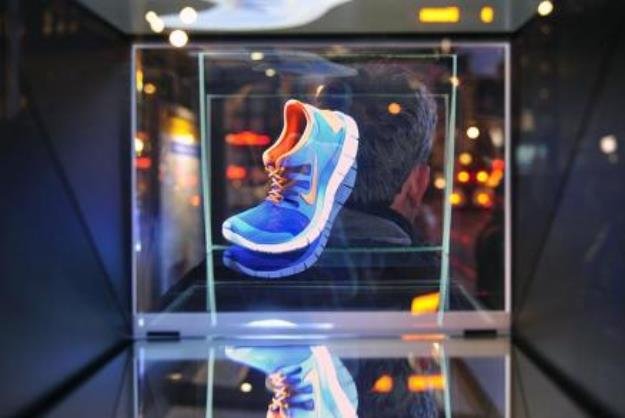Microinteractions are the small, subtle animations or design elements that occur in response to user actions. These can be anything from a button changing color when clicked to a notification showing up when you receive a new message. While these may seem insignificant, they have a powerful impact on how users interact with your website or app. They make experiences more intuitive, enjoyable, and memorable, leading to increased engagement.
What Are Microinteractions?
These moments are an essential part of UX design because they help users understand the system, guide them in their tasks, and enhance the emotional experience of interacting with a product. While microinteractions may seem like a trivial addition, their role in creating a fluid and enjoyable user experience is far more significant than most people realize.
Examples of Microinteractions
Microinteractions are everywhere in our digital lives, but some of the most common examples include:
- Button Animations: The change in color or shape of a button when you hover over it or click it.
- Progress Indicators: The visual cues that show how far along a process is (e.g., a progress bar during file uploads or downloads).
- Error Messages: Clear and engaging feedback when something goes wrong, like a red notification saying “Please fill out this field.”
- Notifications: Alerts that appear to inform users of updates, new messages, or tasks requiring attention.
Why Microinteractions Matter for User Engagement
Enhancing User Experience
Microinteractions are essential for improving the overall user experience. When a website or application is intuitive and easy to use, users are more likely to engage with it for longer periods. By incorporating well-designed microinteractions, you can guide users through complex tasks and create a smooth, enjoyable experience that encourages them to return.
Emotional Connection with Users
Microinteractions also play a significant role in establishing an emotional connection with users. When designed effectively, they can evoke feelings of satisfaction, joy, and delight. Users are more likely to remember and engage with a product that makes them feel good.
Incorporating these emotional elements into microinteractions creates a more immersive experience that keeps users engaged for longer periods. Over time, these positive emotions help build brand loyalty, encouraging users to return and interact with your product or website regularly.
Encouraging Desired Behaviors
Microinteractions can also help guide users toward specific actions or behaviors that are beneficial to your product or service. For example, if you want users to complete a form, you can use visual cues and microinteractions to make the process feel smoother and less frustrating. A progress bar, for instance, shows users how far along they are in the process and how much longer it will take, encouraging them to complete the task.
Improving Usability and Accessibility
Another crucial benefit of microinteractions is their ability to enhance the usability and accessibility of a website or application. By providing feedback when users take an action, microinteractions ensure that users feel confident navigating the platform.
Microinteractions also contribute to the overall clarity of a design. When done right, they help users quickly understand how to interact with the system and what to expect next. This is particularly important for users who are unfamiliar with the interface or new to the platform.
Best Practices for Designing Microinteractions
1. Keep It Simple
While microinteractions are designed to add a touch of personality to a website or app, it’s important not to overdo it. The best microinteractions are simple, subtle, and unobtrusive. The goal is to enhance the user experience without overwhelming the user with too many distractions.
Focus on creating smooth transitions and animations that feel natural within the context of the interaction. Avoid adding unnecessary elements that don’t contribute to the user’s goal or the flow of the interaction.
2. Provide Clear Feedback
One of the primary purposes of microinteractions is to provide feedback. Whether it’s confirming a user’s action or providing an alert for an error, feedback should be clear and easy to understand. Visual indicators such as color changes, animations, and icons are great ways to show users that their action has been acknowledged.
For example, when a user clicks a button, the button should immediately change color or shape to indicate that it has been pressed. Similarly, if an error occurs, provide clear instructions on how to resolve the issue.
3. Stay Consistent
Consistency is key when designing microinteractions. Use the same animations, colors, and sounds throughout the interface to create a cohesive experience. This helps users become familiar with the interactions and reduces confusion.
For example, if a button turns blue when clicked on one page, make sure the same behavior occurs throughout the entire platform. Consistency ensures that users don’t feel disoriented when navigating through different parts of the site or app.
4. Use Animations Wisely
While animations can be fun and engaging, they should always serve a purpose. Avoid using animations just for the sake of decoration or entertainment. Instead, use them to guide users, provide feedback, and make interactions feel more fluid and intuitive.
For instance, a loading animation can help users understand that something is happening in the background, preventing frustration when they are waiting for content to load.
5. Test and Iterate
Like any design element, microinteractions should be tested and refined to ensure they work well with your users. Conduct usability tests to see how users respond to different microinteractions and gather feedback to improve their effectiveness.
Pay attention to how users engage with your website or app and make adjustments based on their preferences and behaviors. Continuously improving your microinteractions will help create a more engaging and satisfying user experience.
Conclusion
Microinteractions are a powerful tool for improving user engagement and enhancing the overall user experience. By providing feedback, creating emotional connections, and encouraging desired behaviors, microinteractions play a pivotal role in designing seamless and enjoyable digital experiences.
Devoq Design is a leading UI/UX design agency with a strong presence in both UI/UX Design Agency in West Bengal and UI/UX Design Agency in Rajasthan offering innovative and user-focused design solutions for businesses looking to enhance their digital platforms. With a team of skilled designers and developers, Devoq specializes in crafting visually stunning and intuitive interfaces that improve user experience and drive engagement. Whether in West Bengal or Rajasthan, Devoq Design tailors its services to meet the unique needs of clients across various industries, ensuring that every project aligns with business goals and user expectations. By staying ahead of design trends and utilizing the latest technologies, Devoq Design transforms digital products into seamless, user-friendly experiences that lead to long-term success and customer satisfaction.









































































































































































































































































































































































































































































































































































































































































































































































































































































































































































































































